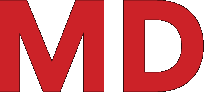SUCHMASCHINEN OPTIMIERUNG
HALLO
Wenn du uns gerne als deine Agentur für Digitales Marketing aussuchen würdest, hören wir gerne zu:

SUCHMASCHINEN-
OPTIMIERUNG
Suchmaschinenoptimierung oder SEO (search engine optimization) ist eine Ansammlung von Techniken, die dazu dienen eine Website auf natürliche Weise in der Trefferliste von Google aufzuführen, durch die Auswahl von Keywords.
SEO ist ein langfristiger Prozess bei dem man versucht ein Unternehmen / Produkt / Service zu positionieren.
Das Ziel ist nicht nur in Google gelistet zu sein, sondern auch die Besucher Ihrer Website zu erhöhen.
SUCHMASCHINEN
The most important search engines, including Google with the majority of searches performed, are studied and investigated. Search engines are constantly changing so it is important to be up to date with all the changes in the digital world. We are a vanguard digital marketing agency, focusing on new developments and customer needs.
KEYWORDS
Wir studieren und untersuchen die großen Suchmaschinen wie Google, mit der höchsten Anzahl an Suchanfragen weltweit. Suchmaschinen ändern sich ständig, daher ist es wichtig, auf dem aktuellen Stand zu sein, bei all den Veränderungen in der digitalen Welt. Wir sind eine Agentur für digitales Marketing der Avantgarde, die sich auf neue Entwicklungen und Bedürfnisse des Kunden konzentriert.
META TAGS
Meta-Tags für jede Sektion der Website werden optimiert. Sowohl title als auch description müssen einmalig und für diese Sektion relevanten sein. Die ausgewählten Keywords werden immer miteinbezogen und es wird auf die maximalen Zeichen geachtet. Es hat für den Benutzer attraktiv zu sein, um seine Aufmerksamkeit zu erwecken damit er auf das Ergebnis in der Google Trefferliste klickt.
INHALT – ARCHITEKTUR
Der Inhalt der Website muss mit den ausgewählten Keywords optimiert werden. Idealerweise ist der Text, kreativ, einzigartig und interessant für den Besucher. Verwenden Sie nie kopierte Inhalte um Nutzern Lösungen zu liefern. Optimieren Sie auch die Überschriften und Bilder von jeder einzelnen Sektion der Website. Jede der Überschriften müssen Ihre Hierarchie (H1/H2) mit dem Keyword und jedes Bild alt / title, enthalten.
URLS
Das Optimieren der URL ist einer der wichtigsten Bestandteile bei der Umsetzung von SEO auf einer Website. Eine einfache URL die Keywords beinhaltet verbessert das Ranking in den Suchmaschinen und erleichtert außerdem das Verständnis der Website für die Nutzer, daher ist es notwendig die URLs zu ändern. Viele Besucher fühlen sich unwohl wenn sie auf eine lange oder merkwürdige URL klicken, deshalb müssen URLs nutzerfreundlich und leicht zu merken sein.
LINK BUILDING
Es gibt zwei Arten von Link Building: Intern und Extern. Internes Linkbuilding bedeutet alle Sektionen einer Website untereinander zu verlinken, damit Besucher ungestört und ohne Hindernisse auf der Website navigieren können. Die andere Art des Link Building ist Extern. Hierzu müssen Websites gefunden werden, die relevant für die Eigene sind und wo wir einen Link auf unsere Website platzieren können. Seiten mit einem hohen PageRank werden bevorzugt.
 Whatsapp
Whatsapp

















